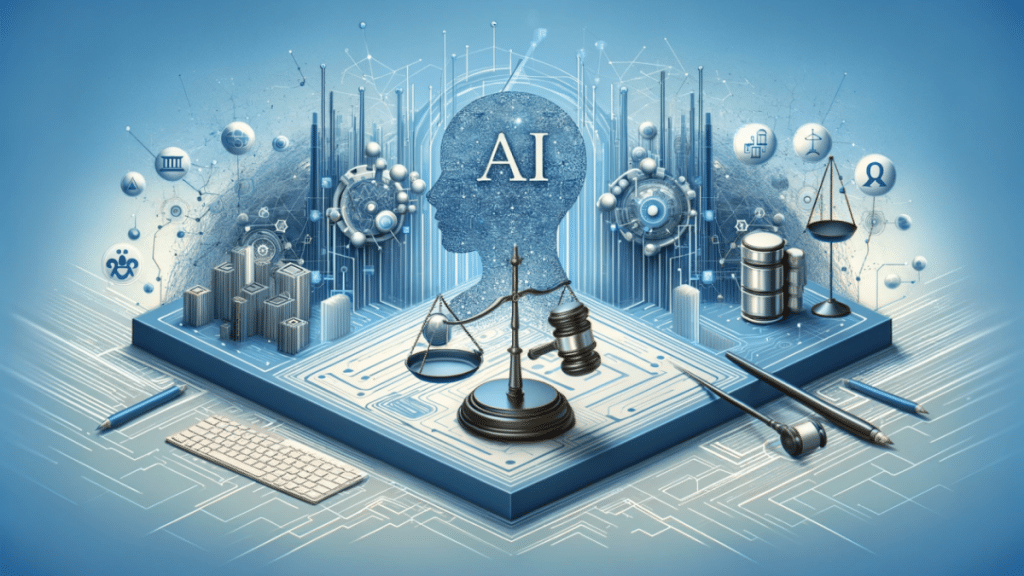As artificial intelligence (AI) continues to revolutionize various industries, the need for robust regulatory frameworks becomes increasingly crucial. AI technologies bring forth a myriad of opportunities and challenges, prompting governments and regulatory bodies to establish guidelines that ensure the ethical, fair, and safe use of these powerful tools. This article explores the evolving regulatory landscape surrounding AI and delves into compliance requirements across different industries.
The Rapid Growth of AI and Regulatory Response
The rapid evolution of AI technologies has outpaced the development of comprehensive regulatory frameworks. Governments worldwide are grappling with the need to strike a balance between fostering innovation and safeguarding against potential risks associated with AI. As a result, industry-specific regulations are emerging to address the unique challenges posed by AI applications.
1. Healthcare Sector: Ensuring Patient Privacy and Data Security
In the healthcare sector, AI is making significant strides in diagnostics, personalized medicine, and patient care. However, the sensitive nature of healthcare data requires stringent regulations. Compliance with standards such as the Health Insurance Portability and Accountability Act (HIPAA) in the United States and the General Data Protection Regulation (GDPR) in Europe is paramount to ensure patient privacy and data security. AI developers and healthcare providers must navigate these regulations to implement AI solutions responsibly.
2. Financial Services: Managing Bias and Ensuring Fairness
In the financial services industry, AI is employed for fraud detection, risk assessment, and customer service. However, concerns about algorithmic bias and discriminatory practices have led to increased regulatory scrutiny. Regulatory bodies, including the Financial Stability Oversight Council (FSOC) in the United States and the European Banking Authority (EBA) in Europe, are focusing on guidelines to ensure fairness and transparency in AI algorithms used for decision-making in finance.
3. Autonomous Vehicles: Addressing Safety and Liability
The emergence of autonomous vehicles presents unique challenges in terms of safety and liability. Governments are developing regulations to ensure the responsible deployment of AI in the automotive industry. Compliance requirements include rigorous testing procedures, cybersecurity measures, and liability frameworks that establish responsibility in the event of accidents involving autonomous vehicles.
4. Legal and Ethical Considerations Across Industries
Beyond industry-specific regulations, overarching legal and ethical considerations are vital in the realm of AI. Transparency, accountability, and the explainability of AI algorithms are becoming key focal points for regulators. Adherence to these principles helps build public trust and ensures that AI is deployed in a manner that aligns with societal values.
Global Collaboration for Effective Regulation
Given the global nature of AI development and deployment, collaboration among nations is crucial for effective regulation. International organizations such as the Organisation for Economic Co-operation and Development (OECD) and the World Economic Forum (WEF) are working towards establishing common principles and guidelines that can serve as a foundation for AI regulation worldwide.
1. International Organizations Leading the Way:
International bodies, including the Organisation for Economic Co-operation and Development (OECD) and the World Economic Forum (WEF), have emerged as pioneers in facilitating global collaboration for AI regulation. The OECD’s AI Principles, endorsed by member countries, provide a foundational framework emphasizing transparency, accountability, and inclusivity. The WEF, through its Global AI Council, fosters dialogue among global leaders, policymakers, and industry representatives to address common challenges and identify best practices.
2. Common Principles for Responsible AI:
Establishing common principles for responsible AI is a key focus of global collaboration efforts. By developing shared guidelines, countries can harmonize their regulatory approaches, fostering a consistent and transparent environment for the development and deployment of AI technologies. These principles often include considerations such as fairness, accountability, transparency, and the protection of fundamental rights.
3. Cross-Border Data Governance:
The nature of AI involves the processing and sharing of vast amounts of data across borders. As a result, establishing effective cross-border data governance mechanisms is crucial. International collaboration can help define standards for data protection, privacy, and security, ensuring that AI applications adhere to a universal set of principles while respecting the legal and cultural nuances of different regions.
4. Harmonizing Standards and Certification:
To facilitate global trade and innovation, there is a growing need to harmonize AI standards and certification processes. International collaboration can streamline the development of common standards that provide a baseline for ethical AI practices. This harmonization can help businesses navigate regulatory complexities and ensure that AI products and services meet a globally recognized set of criteria.
5. Mutual Recognition of Regulations:
Countries are exploring the concept of mutual recognition of AI regulations to simplify the compliance process for businesses operating across borders. By acknowledging and respecting the regulatory efforts of other nations, countries can reduce duplication of efforts and create a more efficient and globally integrated regulatory landscape.
6. Capacity Building and Knowledge Exchange:
Global collaboration extends beyond policy and regulation; it involves capacity building and knowledge exchange. Developing countries may face unique challenges in implementing and enforcing AI regulations. Collaborative initiatives that involve sharing expertise, resources, and best practices can support these nations in building their regulatory frameworks and ensuring that AI benefits are distributed equitably on a global scale.
7. Addressing Geopolitical Challenges:
Geopolitical tensions and differing regulatory approaches can pose challenges to global collaboration. Diplomacy and dialogue play a crucial role in overcoming these challenges, fostering understanding, and finding common ground. Efforts to bridge geopolitical divides and build consensus on key AI principles contribute to a more unified and effective global regulatory environment.
Conclusion
Navigating the regulatory landscape for AI compliance is a complex task, given the diverse applications of AI across industries. As technology continues to advance, regulators face the ongoing challenge of adapting and evolving frameworks to keep pace with innovation. Stakeholders, including businesses, policymakers, and the public, must actively engage in shaping responsible AI practices to ensure the benefits of AI are realized while minimizing potential risks. The collaborative effort to establish and adhere to robust AI compliance requirements is essential for fostering a sustainable and ethical AI ecosystem across industries.


